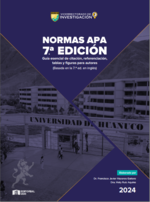Construction of female sexuality with a gender approach: an approach to sexual crime
DOI:
https://doi.org/10.37711/Keywords:
gender, sexuality, sexual crime, forensic psichology, femenineAbstract
Objective. To analyze the gender mandates that construct women's sexuality and their influence on the prevalence of sexual offending. Method. A quantitative research with a non-experimental, cross-sectional and exploratory design was carried out. An online questionnaire of 25 items on the Likert scale was applied to 250 cisgender Mexican women and university students, selected through convenience sampling. Quantitative analysis was performed by item and age ranges. Descriptive statistics and contingency table analysis were used, for which a chi-square test of
independence was performed for the variables “age” and “areas of sexuality”; these were analyzed from a gender perspective. Results. The relevant data show that gender mandates related to the areas of society, body and violence in women's sexuality have a greater influence on the way women construct their sexuality, mainly in young women. It is highlighted that 74% of the participants are afraid to go out at night because they think they may be sexually violated. Conclusions. The gender perspective is a useful analytical tool for judicial authorities, as it makes it possible to explain the psychosocial and cultural characteristics involved in the prevalence of sexual crime.
Downloads

Downloads
Published
Issue
Section
License
Copyright (c) 2025 Cynthia Valeria Díaz Díaz, Alba Luz Robles Mendoza, Tania Esmeralda Rocha Sánchez, Zoraida García Castillo

This work is licensed under a Creative Commons Attribution 4.0 International License.



















